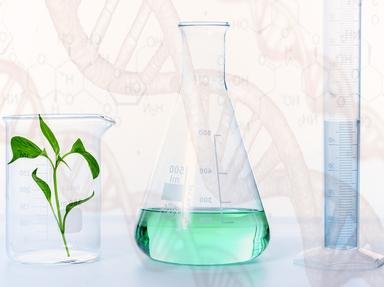Quiz Answer Key and Fun Facts
1. As we all are aware, lasers have become a part of our lives. From surgeries to supermarkets, they are everywhere. In the most common laserbeam, which two gases are combined to form the laser?
2. I have a packet of French fries. My friend says that if I put a little acetic acid in the fries, they will taste better. I am astounded. I ask him if my tongue will burn. Then my friend laughs and tells me acetic acid is the chemical name for...
3. I first took a beaker and poured concentrated sulfuric acid in it. Then, to dilute the acid, I poured water in the beaker.What happened next?
4. My friend and I took some hydrochloric acid and sodium hydroxide and mixed it in controlled conditions. What should we get as a product?
5. Anode rays and protons were discovered by which chemist?
6. What are atoms of an element with the same number of protons but different number of neutrons in the nucleus known as?
7. Dihydrogen monoxide is the chemical name for what necessity?
8. I have little stickers that glow in the dark after the light goes off. How do they do that?
9. Why do modern airships such as blimps use helium rather than hydrogen gas?
10. Which of the following is not an element?
Source: Author
johnnyvin
This quiz was reviewed by FunTrivia editor
crisw before going online.
Any errors found in FunTrivia content are routinely corrected through our feedback system.

